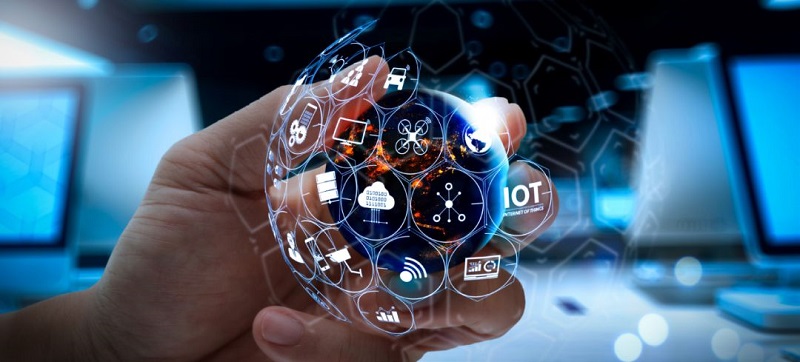At the core of innovation and maintaining competitive advantage is reliable and accessible data, and the Internet of Things enables companies to capture large amounts of critical data from their assets, people and processes. This data is a lifeline to reduce costs, increase efficiency and provide a safer environment for employees. . While IoT is no longer a new concept, deploying large-scale network connectivity has become more urgent than ever for some industries.

The following are five major industries with promising IoT development trends in 2021:
1. Agriculture
Faced with the severe challenges of explosive growth in the world’s population, shrinking arable land and natural resources, and increasingly severe extreme climate events, agricultural production is facing undue pressure. To increase yields while minimizing resource use, farmers around the world are turning to the Internet of Things and precision agriculture.
The global agricultural technology market is growing at a CAGR of 12.8% and is expected to reach approximately US$5.5 billion by 2021. By using new technologies such as the Internet of Things and big data, farm activities can generate approximately 100,000 data points per hectare. This data is being transformed into actionable knowledge, allowing farmers to achieve consistent and higher yields with fewer resources such as fertilizer, water and energy per hectare. Ultimately, this will lead to higher profitability and long-term sustainability.
2. Manufacturing industry
From reducing maintenance costs and supporting new business to improving overall productivity, IoT has become key to maintaining a competitive edge in manufacturing. With new business insights enabled by massive network connectivity, it’s no surprise that the global manufacturing IoT market is expected to reach $994 billion by 2023.
In 2020, we saw most companies pivot to remote operations, and manufacturing was no exception. In addition to ensuring safe, secure and efficient facilities, companies must consider new ways of operating. With the pandemic crisis leading to a loss of on-site workers, it’s clear that the operating model that keeps everyone in the company needs to change. IoT is driving the success of remote operations such as monitoring and maintenance. With real-time data, businesses can better monitor the health of assets, products, and machines to optimize their use, better predict impending failures, and determine the root cause of problems. As a result, condition-based predictive maintenance can reduce costly downtime and repairs. With the ability to reduce downtime, speed resolution times, and improve uptime, businesses can also improve customer service and create new business opportunities and service level agreements.
3. Intelligent buildings
Even before the COVID-19 outbreak, the commercial real estate industry in recent years began to focus on the comfort and well-being of its tenants. Recognizing that people are the greatest asset in the built environment, companies and building owners have turned to IoT and smart building technologies to achieve healthy, comfortable environments. Now, the pandemic is rapidly accelerating this trend globally. Smart building technologies, especially IoT solutions, enable owners and operators to effectively enforce new building codes and protocols, ensuring optimal ventilation, hygiene, distancing and tenant well-being.
For example, we will see a surge in the deployment of sensors in offices, retail, and hospitality that can track the number of people entering, leaving, and using specific areas (e.g., queues, waiting rooms, bathrooms, conference rooms, office kitchens, etc.). The data will be used to pinpoint overused and underused areas to streamline cleaning services, ensure safe distancing practices and encourage regular sanitation.
4. Oil and natural gas
As an asset-intensive industry, oil and gas companies are constantly striving to maximize equipment performance and production. So it’s no surprise that approximately 65% of enterprises list optimization and predictive maintenance as the top focus of their IoT initiatives. Advanced wireless connectivity endpoints and low-cost sensor devices are helping to digitize and enhance previously disconnected assets and processes, positively impacting the bottom line.
For example, wireless IoT sensors can monitor field devices in remote areas. Any non-compliance can be detected immediately, so informed decisions can be made about when and how to perform maintenance, thereby increasing equipment uptime and helping to increase production.
In addition, many processes that in the past required inefficient manual labor, such as reservoir water level monitoring, can also benefit from the deployment of wireless IoT sensors to achieve effective coordination of tasks. IoT can also automate on-site supervision and asset monitoring to improve worker health and safety. Since fewer site visits are required, employees are exposed to fewer potential hazards. Even if an on-site repair is required, the risk can be mitigated because useful insights from IoT sensors allow technicians to prepare in advance.
5. Medical care
The global healthcare industry has never faced greater pressure. Hospitals are struggling to improve the quality of care while essential medical supplies and resources are rapidly dwindling. The COVID-19 pandemic has sparked discussions about the future of IoT in healthcare and how to securely connect healthcare professionals and patients. Even before the COVID-19 outbreak, though, the healthcare industry had been looking for new ways to address challenges around inefficiencies, supply chain management and operating costs.
There are a variety of IoT technologies that offer unprecedented value in the healthcare industry. Wireless tracking solutions and real-time location systems solve asset management problems by building real-time maps of all critical mobile assets in their facilities—from hospital beds and wheelchairs to defibrillators, infusion pumps, ventilators, portable endoscopic equipment, and more. IoT devices help patients take medications at home; sleep monitoring devices track heart rate, oxygen levels and movement in high-risk patients; and continuous glucose monitoring sensors connect to mobile devices and alert patients and clinicians of changes in blood sugar levels.
The Internet of Things opens up a world of possibilities in healthcare, providing valuable data about patients, staff, facilities and assets. This critical insight not only gives patients more control over their lives and treatments, but also improves operational efficiency, allowing medical professionals to focus more on patient care.